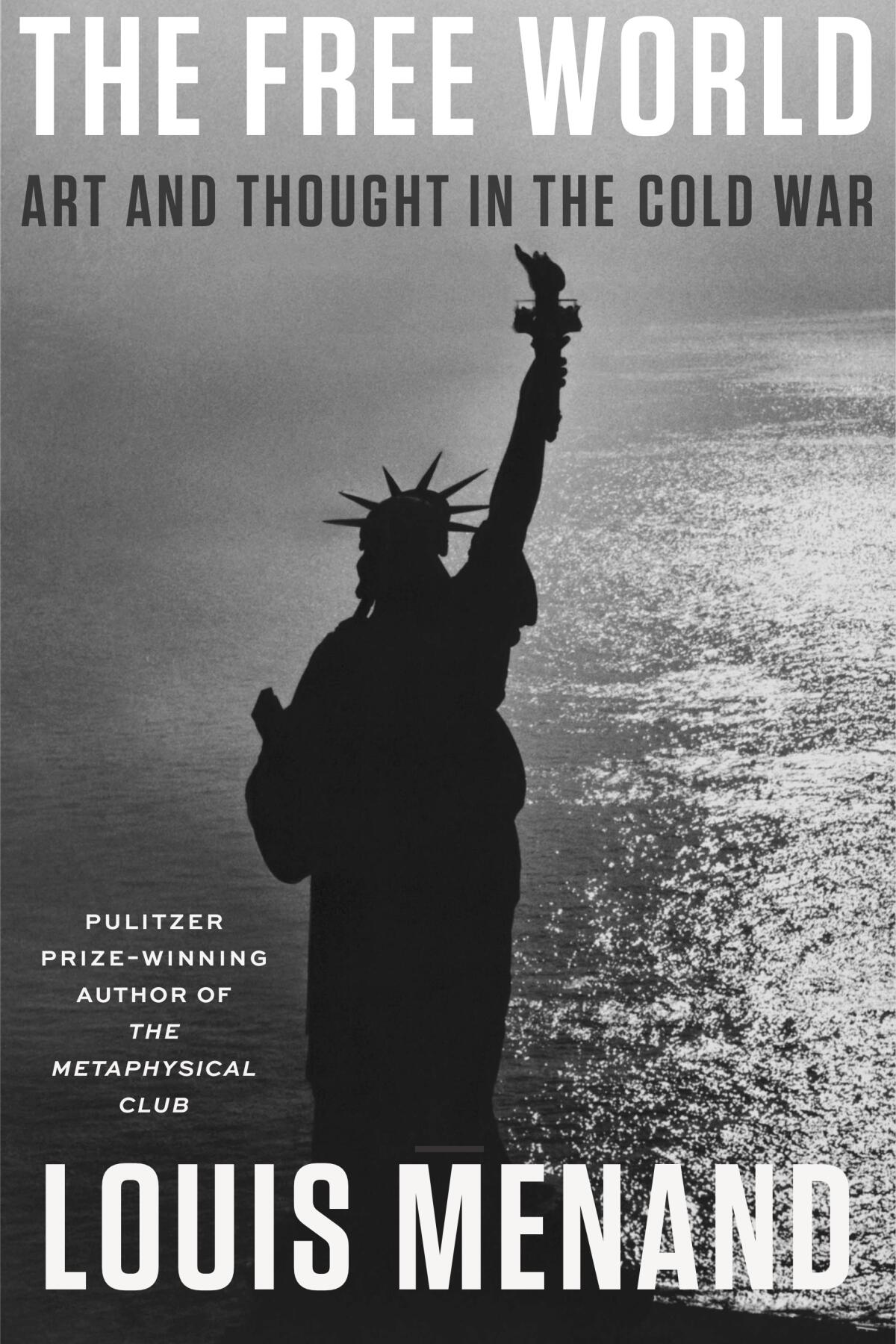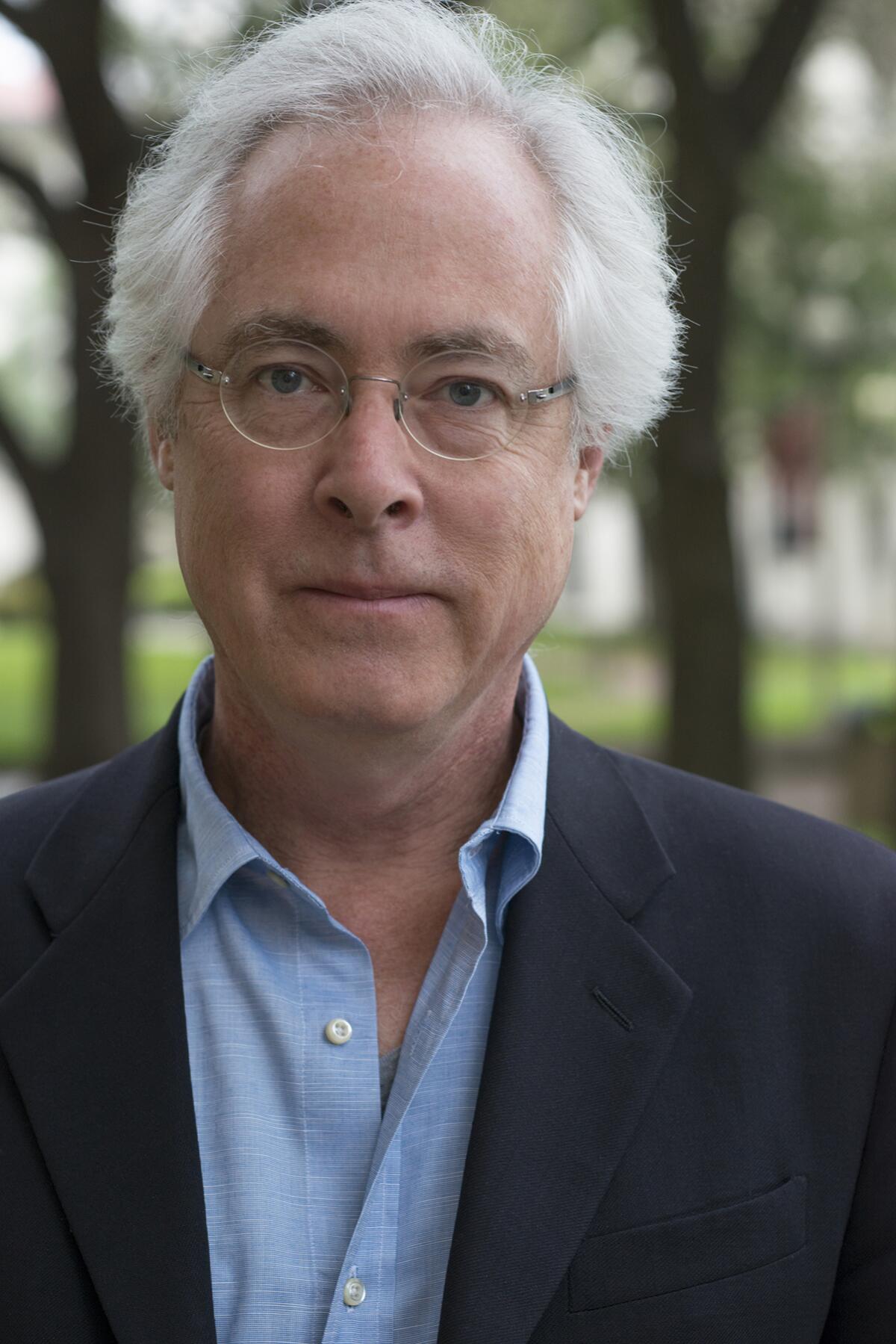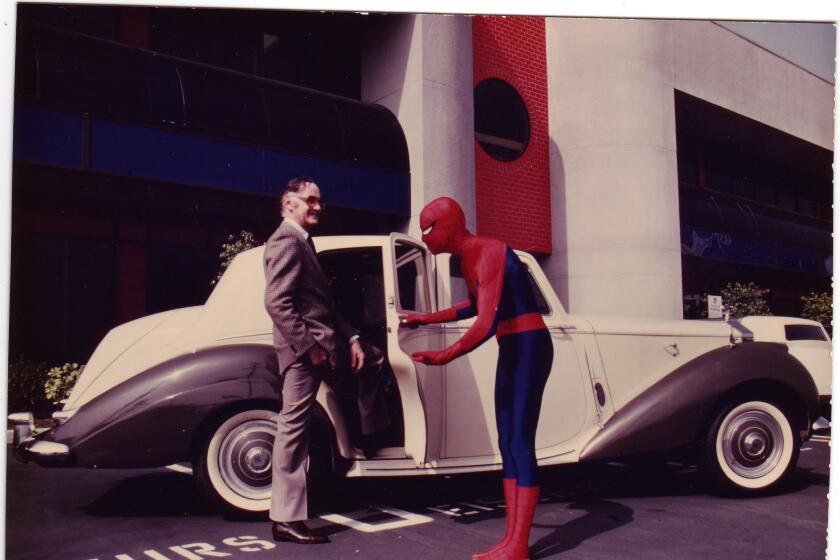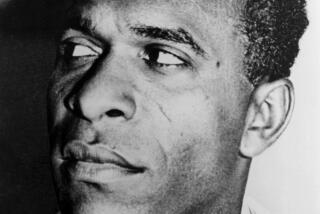Review: Louis Menand’s history of ‘The Free World’ -- at least according to boomers

On the Shelf
The Free World: Art and Thought in the Cold War
By Louis Menand
FSG: 857 pages, $35
If you buy books linked on our site, The Times may earn a commission from Bookshop.org, whose fees support independent bookstores.
“If you had asked me when I was growing up what the most important good in life was, I would have said, ‘freedom,’” Pulitzer Prize winner Louis Menand writes in the preface to “The Free World: Art and Thought in the Cold War.” But like so many of us, Menand never gave careful thought to the meaning of the word. “Now I can see that freedom was the slogan of the times. The word was invoked to justify everything. As I got older, I started to wonder what freedom is, or what it can realistically mean. I wrote this book to help myself and maybe you figure that out.”
Menand, a Harvard professor and New Yorker writer, has taken one of freedom’s ancillary slogans — “the free world” — beyond its usual associations with foreign policy and presidential muscle (“the most powerful man in the free world”) and endowed it with multiple meanings in this deeply researched and ultimately personal reckoning with midcentury America. In this wide-ranging story, he displays a gifted eye for the telling anecdote, an enviable ability to explain the complicated with clarity and economy and an impressive mastery of detail. He also exemplifies the limitations of his generation in thinking about both freedom and the book’s real subject, which is art.
Menand was born in 1952, and his world is free in the traditional sense of the Western democracies that countered totalitarian regimes (mainly behind the Iron Curtain); free in the sense that it stood for the nominal liberation of the European colonies; free in the sense of the civil rights and women’s movement offering new liberties in the U.S.; free in the sense of more leisure time and fewer social conventions; and, most important, free in the sense of creativity and self-expression.
In the end, though, freedom is reduced to mainly what totalitarianism is not. So Menand opens the book with George Kennan, whose Long Telegram helped define the Cold War, and George Orwell, whose “1984” put totalitarianism at center stage. Menand’s freedom is externally generated rather than creatively induced; it is ultimately a product of international relations — more realpolitik than revolution.
Review: The roots of the 1963 March on Washington
It is a pity Menand can’t think more imaginatively about freedom. One can envision an alternative narrative of midcentury American ideas of freedom, sprung from domestic concerns and defined positively. It might draw on the thinking of such figures as Franklin and Eleanor Roosevelt, Ella Baker or A. Philip Randolph — or Gunnar Myrdal, whose seminal 1944 work on race relations, “An American Dilemma,” shaped so much of the consensus view of the post-World War II United States with its formulation of a broad “American Creed.” Myrdal’s influence shows up everywhere from Martin Luther King Jr.’s speeches to Steven Spielberg’s serious movies, but usually without attribution, so self-evident does the idea now seem.
Having defined freedom mainly in its absence, Menand feels free to hopscotch through his favorite parts of midcentury mass high culture — painting, literature, the avant gardes — without concern for coherence or connection. The individual chapters tell compelling stories of artistic innovation and cultural liberalization but the tissue connecting one part to the other remains opaque, and a broader understanding of why freedom seemed so expansive at the time is elusive. (Self-aware enough to know that he might have fallen short, Menand assures at one point, “but the dots do connect,” while absolving himself of the connecting).

More to his credit, Menand also resists making overt connections between past and present, leaving readers to draw their own conclusions. But his bric-a-brac approach does give the book a “Forrest Gump” vibe. Robert Rauschenberg, Merce Cunningham and Jasper Johns gather in one chapter. Russian poet Anna Akhmatova, Chief Justice Earl Warren, Henry Miller, the paperback book revolution and obscenity trials star in another chapter. Elvis Presley, youth culture, Bob Dylan and the Beatles march through a third. When it works, it really works. When it doesn’t, the chapters sprawl and lose focus.
Take the chapter on the rise of higher education, which overflows past 60 pages, tripping back in time to T.S. Eliot and Ezra Pound and taking a long detour through the Southern Fugitive poets before getting to the Beats — “Howl” and Kerouac — and ending with a discussion of Derrida and deconstruction that sets up a rousing defense of a liberal arts education.
The spine of the book seems to be drawn from a class Menand has been teaching on midcentury American cultural history since the early 2000s. He is by all accounts a gifted and popular teacher, but the road from a great class to a great book is trickier than Dorothy’s journey from Munchkinland to Emerald City. When “The Free World” was structured as a course, Menand taught it “like a novel with a hundred characters.” A capacious and imaginative class can work as a kind of intellectual HBO serial, a sprawling drama doled out over months and savored in small bites.
But a book has the rhythm of a Netflix binge. Where every chapter introduces a new cluster of ideas and cast of characters, each richly sketched, it makes for a kaleidoscopic, almost entropic reading experience. The result feels jumbled and overstuffed. Even if the individual stories are memorable and distinct, the sum of the parts threatens to capsize the whole.
Was Stan Lee a genius or a huckster? ‘True Believer,’ a new biography of the Marvel creator, weighs in.
There are notable omissions. Television and Broadway theater are almost entirely absent. So is Hollywood cinema, with the exception of a wonderful bit on “Bonnie and Clyde.” Walt Disney and Stan Lee are totally absent. There’s no Lorraine Hansberry or Harry Belafonte. Lenny Bruce merits only passing mention. Few characters validated the outsider as much as Spider-Man or the X-Men, or addressed the fears of totalitarianism head on like a horror movie, or pushed the boundaries of speech like the comics who performed blue.
There’s more than a whiff of elitism to Menand’s choices. His heroes are the narrow band of elite critics and the entrepreneurs who created new platforms for them: the Sontags and Kaels and the Rossets and Jann Wenners. And when he does delve into pop culture — mainly through music — he can be cutting: The Beatles “were not artists and never thought of themselves in those terms. They were entertainers.” (Though to be fair he skewers his own New Yorker as more concerned with how to talk about art at a cocktail party than how to genuinely appreciate it.)
Indeed, one of his key arguments is that this art was important because the great critics of the period made it important. As he writes, “Most striking was the nature of the audience. People cared. Ideas mattered. Painting mattered. Movies mattered. Poetry mattered. The way people judged and interpreted paintings, movies and poetry mattered.”
Those early lines suggest this story is ultimately going to be one of decline, and indeed, a sad undercurrent of nostalgia hangs over the rest of the book. Perhaps the curio cabinet-effect reflects a desire to collect and recollect an essential American object Menand feels is in danger of being lost. Underlying his project is an earnest romantic belief that the world of the boomers, though shadowed by the anxieties and hypocrisies of the Cold War, was somehow freer than the present, its ideas brighter, its promises more promising.
The sentiment stirred in my mind a soundtrack not of Dylan or the Beatles but the Who, another band of the era treated only in passing by Menand: “Hope I die before I get old.”
Jon Meacham’s “His Truth Is Marching On: John Lewis and the Power of Hope” honors Lewis’ resistance but leaves out the hard work that got us here.
Lewis is the author of “The Shadows of Youth: The Remarkable Journey of the Civil Rights Generation,” among other books.
More to Read
Sign up for our Book Club newsletter
Get the latest news, events and more from the Los Angeles Times Book Club, and help us get L.A. reading and talking.
You may occasionally receive promotional content from the Los Angeles Times.








